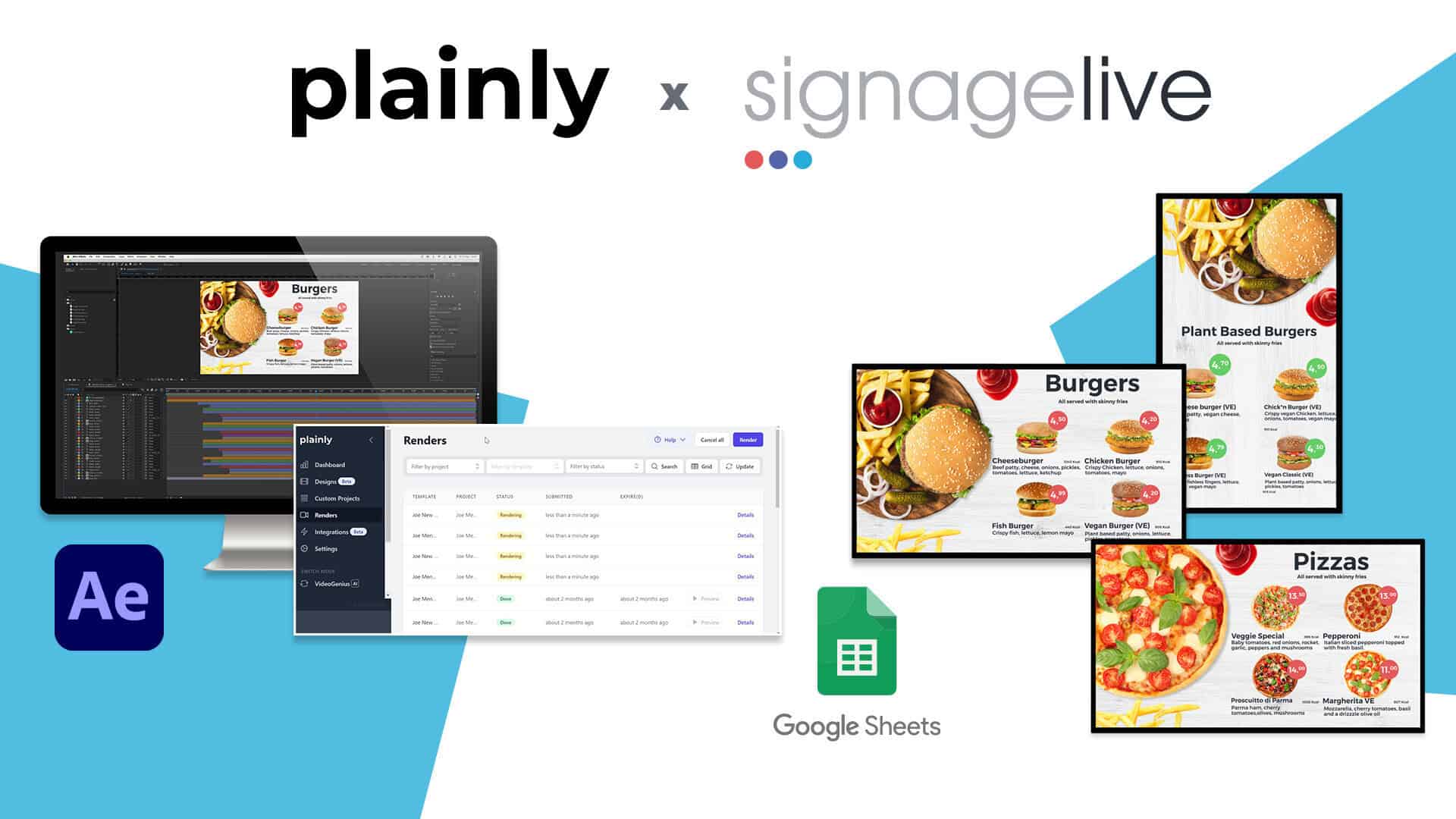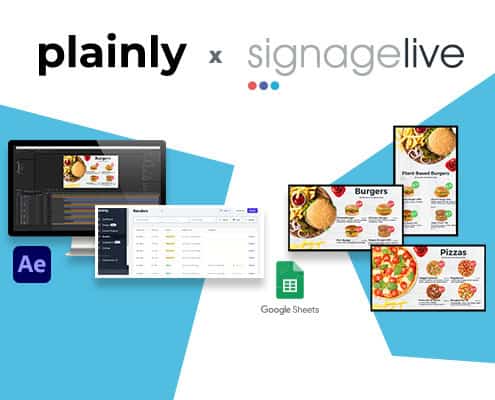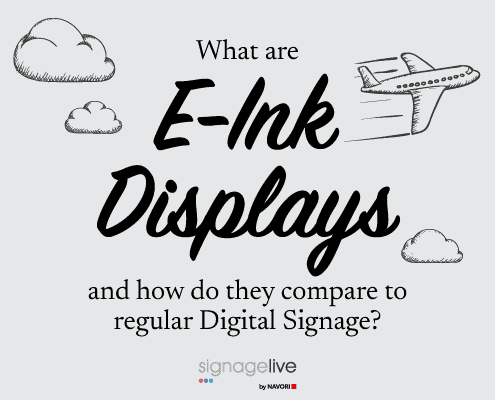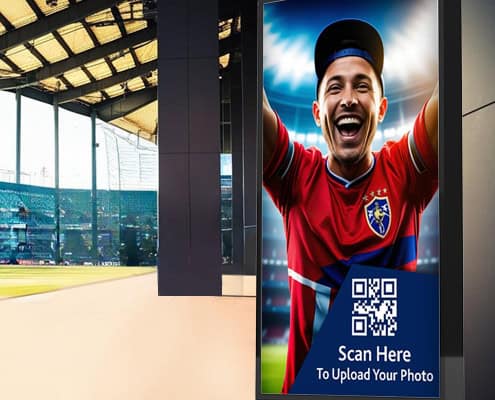
Are you struggling to create high-quality videos for your digital signage displays? Then, read on. In this guide, we give you everything you need to improve your content, and accelerate your video production. With the right guidelines and tools, like automation and digital signage software, you can create engaging videos affordably, simply – and at scale.
Understand your Audience and Location
Before you start the content creation process, it’s important to understand your audience and location.
Ask yourself:
- Who will be watching your content?
- What action do you want them to take?
Next, think about the location of your digital signage displays. Where will your videos be featured, and how will this impact what you create?
The environment can make or break the success of your videos.
Consider:
- The lighting conditions. In harshly lit spaces or sunlit window displays, you may need anti-glare high brightness digital signage displays to ensure on-screen visibility.
- Viewing distances. If your content will be viewed from close proximities, then opt for ultra-sharp, higher resolution Full HD or 4K content, and compatible digital signage displays
- Sound levels. For noisy, high traffic areas, opt for silent playback, rather than videos with audio.
Best Practices for Digital Signage Video Content
1. Make it Concise and Impactful
- The ideal length for digital signage video content is 15-30 seconds.
- Avoid long narratives; instead, focus on concise messaging.
- Use striking visuals that tell a story quickly.
2. Maximise the Clarity of Visuals
- Create your video in 1080p (Full HD) or 4K if your screens support it.
- Make text and graphics stand out with bright, contrasting colours.
- Use minimalist, clean designs to maintain a polished and professional look.
3. Tips for Silent Playback
- Use large, readable text to convey key messages.
- Incorporate animations, graphics, and subtitles to reinforce messaging.
- Avoid exclusively relying on voiceovers.
4. Incorporate Motion Graphics and Animations
- Remember that smooth transitions and subtle animations make content more dynamic.
- Guide viewers’ eyes to key information with animated elements.
- Avoid too much movement that can distract rather than inform.
5. Maintain Brand Consistency
- Adhere to your brand’s colours, fonts, and logo.
- Ensure a uniform tone across different video clips.
- Enhance brand recognition by incorporating your company’s style guidelines.
6. Maximise for Different Screen Orientations
- Consider creating videos in landscape (16:9) and portrait (9:16) versions of your content.
- Check that text and key visuals remain clear in both formats.
- Keep your content away from the edges of your screen, in case it is cut off.
7. Be Strategic with your Scheduling
Timing is everything in digital signage! Often referred to as content management systems (CMS), digital signage software, like Signagelive can help optimise the impact of your videos by enabling you to display them at exactly the right time and place.
Remotely:
- Display time-sensitive content at relevant hours (e.g., promotions during peak hours).
- Pre-schedule content to run on specific dates and at pre-set times on some or all your digital signage displays
- Schedule the end time of your on-screen material, so that it never runs beyond its allocated slot
- Update and edit content in real-time
User-friendly Video Content Tools
Who says you need a professional studio to produce high-quality videos?! With the following user-friendly tools, you can create some incredible footage:
- Adobe After Effects & Premiere Pro – Advanced video editing and motion graphics.
- Canva & Animoto – Easy drag-and-drop video creation.
- Screenfeed Connect – Customisable data-driven video content.
- DaVinci Resolve – Free, professional-grade video editing software.
Automate Video Content at Scale
Signagelive’s partnership with video automation platform, Plainly, enables you to save time and money by automating the video content creation and publication process. Without having to write a single line of HTML code, you can automate everything from the content creation and editing, through to the scheduling and broadcasting.
Think of it as a simple way to accelerate your video production.
Here’s how to automate your video content creation:
- Create a template in Adobe After Effects, upload it to the Plainly platform, and mark the dynamic parameters – these are the elements that will be changed every time and they can be text, images, videos, colours, audio and much more.
- Connect the data that will be driving the video creation. This can be done using a simple Google sheet, but also RSS feeds, CSVs, and even APIs. Plainly will ingest the data you provide, and swap out the dynamic elements based on that data. Think of it like merge field for email.
- Create the tags you need to log every piece of content to a specific digital signage screen/s.
- Finally, set up an integration with Signagelive, so that your videos, once rendered, can automatically be delivered, and displayed on the relevant screens.
Track Performance Metrics with Digital Signage Software
Once your video content is live,why not use digital signage software, like Signagelive to work out how it’s performing?
With features, like Signagelive Proof of Play, you can:
- Confirm what content was played, on which screens, when and for how long
- Check these playback analytics against your own sales and company metrics to track your video content performance
- Share downloadable playback analytics reports
Final Thoughts
Videos for digital signage displays are the ultimate attention-grabbing media. While they may have been complicated and price-prohibitive to make in the past, they’re now much simpler to produce at scale. You can affordably ramp up your video production, and regularly update your content, so that it’s always fresh, timely and relevant.
Ready to take your video content strategy to the next level? Reach out to Signagelive today.





You must be logged in to post a comment.